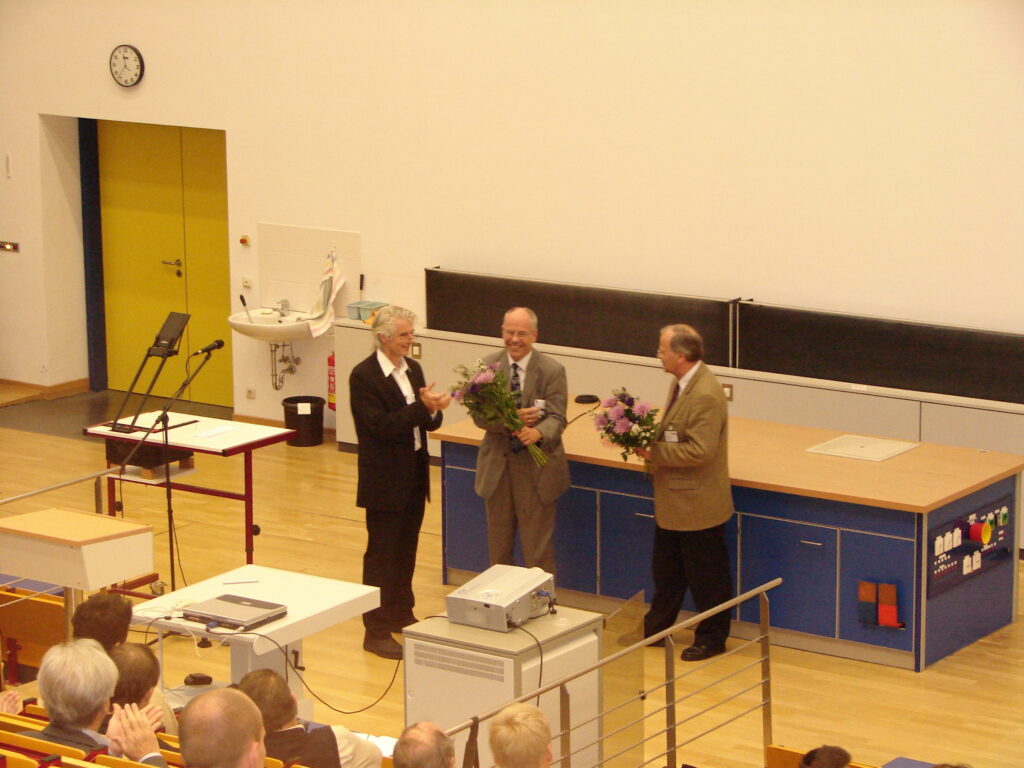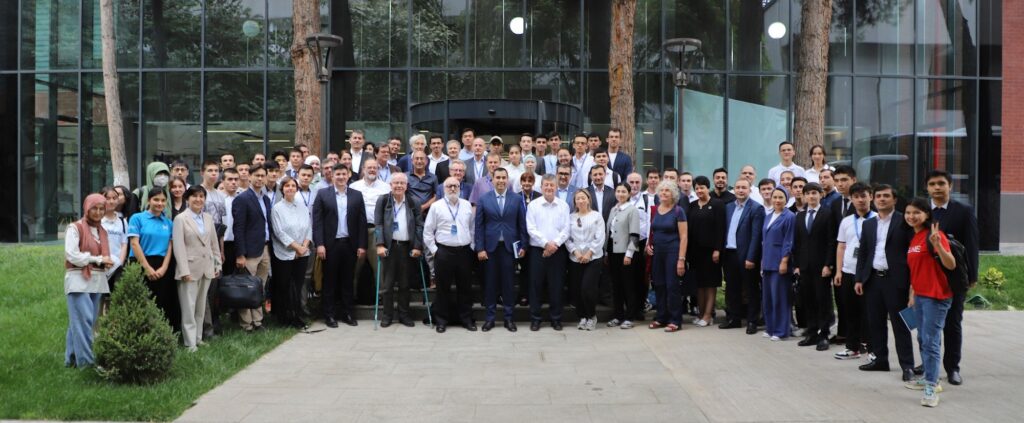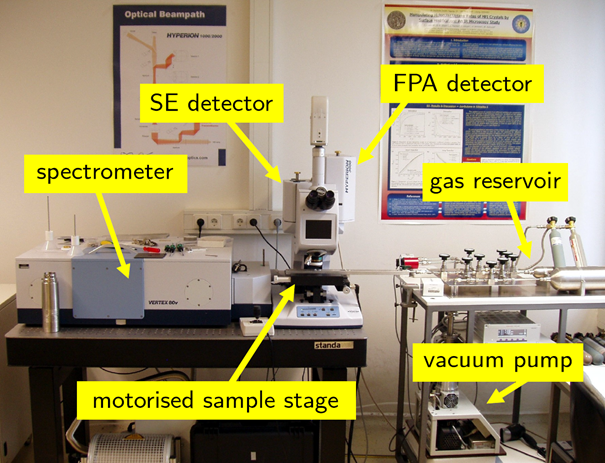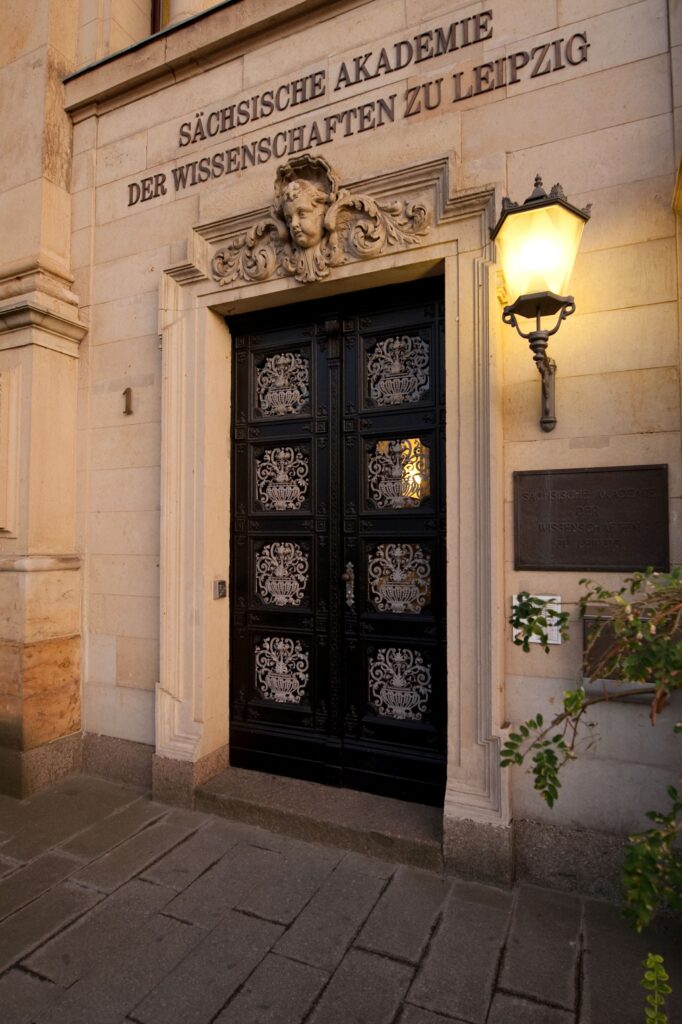An interdisciplinary online journal in the Open Access offering of Leipzig University
Since several years, Leipzig University Library offers members of Leipzig University a free service for the management and publication of electronic journals, based on the journal management and publication software Open Journal Systems (OJS). In this way, it supports researchers in setting up new open access journals or converting established publication series and journals to open access (OA).
Since July 2024, the long-established international OA journal Diffusion Fundamentals has been published in a new format through OJS. We took this occasion to talk to Dr. Christian Chmelik – Head of the Office of Student Affairs at the Faculty of Physics and Earth System Sciences, member of the Diffusion Fundamentals Editorial Board and responsible for the OA journal – about the journal’s long history and the experience of publishing it in open access.
Leipzig University Library (UB Leipzig): Dear Mr. Chmelik, what goals are you pursuing with Diffusion Fundamentals?
C.C.: Diffusion (from the Latin “diffundere”), i.e. the spread of objects through random processes, is a phenomenon that can be observed everywhere – both in Nature and in society. The “objects” considered here can be of a material nature, such as the molecules in a large-scale separation process, or of an immaterial nature, such as fake news in the media. Understanding the laws underlying these processes is an important task in the research in a wide spectrum of individual disciplines.
The aim of Diffusion Fundamentals is to create a forum for discussion of this phenomenon that extends beyond the boundaries of individual disciplines, based on the interaction of the Diffusion Fundamentals conference series and the accompanying Diffusion Fundamentals online journal. Ensuring the OA availability of this journal through the Leipzig University Library is a great benefit for the international diffusion community.
UB Leipzig: From the title, we would have guessed that your journal is in physics or chemistry. However, we read on the journal website that it is interdisciplinary and aims to create a discussion forum for scientists from many different disciplines, including the humanities and social sciences. How did the idea come about?

C.C.: For the first Diffusion Fundamentals Conference, the year 2005 was indeed very intentionally chosen, since it was celebrated worldwide as the “Year of Physics” to commemorate Albert Einstein’s “annus mirabilis” 1905. Among his works from this year alone there were publications on three very different problems, each of which on its own would have been important enough to establish his worldwide fame. Less well known, however, is the fact that in addition to his work on the theory of relativity and the quantization of light, for which he was awarded the Nobel Prize, these three publications also include a paper on diffusion. With this work, he provided the microphysical explanation for the movement of suspended particles, as discovered nearly 100 years earlier by the botanist Robert Brown, and for the so-called “diffusion equations”, as established exactly 50 years earlier by the physician Adolf Fick in analogy to the equation of heat conduction. So, the phenomenon of diffusion had attracted researchers from a wide variety of disciplines already at that time.
The fact that the phenomenon
of diffusion is often attributed
to physics or chemistry
is due to the fact that precise
statements about the diffusion
behaviour of the systems under
consideration is possible there.
In contrast, our knowledge
of the conditions under which,
for example, fake news spreads
in the media is far less precise.
This makes the exploration
of these possibilities all
the more exciting.
The fact that, as you correctly say, the phenomenon of diffusion is still often attributed to physics or chemistry is most likely associated with the fact that often a few parameters are sufficient to describe the systems typically considered in these fields, such as solids, liquids and gases, with sufficient precision, making it possible to make precise statements about the diffusion behavior of their components, i.e. atoms and molecules. In contrast, our knowledge of the conditions under which, for example, fake news spreads in the media is far less precise, so that also our predictions are correspondingly uncertain.
This makes it all the more exciting to explore these possibilities. As a result, in subsequent Diffusion Fundamentals conferences, diffusion phenomena outside of physics and chemistry were increasingly presented and published online at Diffusion Fundamentals. Prominent examples of this were the contributions on “Genetic and Cultural Diffusion” by Luca Cavalli-Sforza, the founder of this field of research, during DFII 2007 in L’Aquila and those by Dirk Brockmann on the spread of diseases and by Anne Kandler on technical innovations, when an entire session was dedicated to “Diffusion in Social Sciences” for the first time during DFIII in Athens in 2009.
UB Leipzig: How can such a variety of topics be reduced to a common denominator and who is behind it?

C.C.: This first Diffusion Fundamentals conference – organized in Leipzig, the place of publication of the aforementioned pioneering works on diffusion by Albert Einstein in 1905 and Adolf Fick in 1855 – generated a great deal of traction. The conference organizers (and editors of the resulting online journal), Jörg Kärger in Leipzig and Paul Heitjans from Hanover, succeeded in recruiting a core team of interested colleagues to join the Diffusion Fundamentals Editorial Board, to whom many good suggestions for the selection of future conference venues and lecture topics with a growing range of topics can be attributed. A constantly recurring passage in the lecture invitations was the reference to the interdisciplinarity of the audience and readership with the request for general comprehensibility, which continues to this day with very varying success.
An important step in ensuring the “common denominator” you mentioned was the assumption of the patronage of Diffusion Fundamentals by the Saxon Academy of Sciences in Leipzig (SAW) at the 6th Diffusion Fundamentals Conference in Dresden in 2015 and, as a result, the formation of a SAW “Structural Commission” on the topic of “Diffusion in nature, technology and society”. From then on, in addition to the international Editorial Board, this Academy Commission also assisted the local organizers in the preparation and implementation of conferences.
From this connection to the SAW with its three classes, the Mathematical and Natural Sciences Class, the Philological and Historical Class and the Technical Sciences Class, Diffusion Fundamentals has benefited in particular in its efforts to achieve interdisciplinarity. A most recent example was the success of the 10th Diffusion Fundamentals conference in September 2023 in Tashkent, the capital of Uzbekistan, which marked the first time that a Diffusion Fundamentals conference had been held in Asia after Europe and America. The contributions from the natural sciences and the humanities were almost equally balanced – after years of dominance by the natural sciences.

UB Leipzig: How does the interaction between the journal and the conference work? How do you acquire contributions for the journal and how is the review process organized?
C.C.: According to the procedure described on our website, submissions for Diffusion Fundamentals are welcome at any time. As already mentioned, the journal is also linked to the international Diffusion Fundamentals conference series, which takes place every two years at different venues around the world. In the run-up to the conferences, all authors are requested to submit abstracts. These are usually limited to one or two pages, but otherwise follow the formalities of “regular” contributions. We are very grateful to the members of the international Diffusion Fundamentals Editorial Board and the SAW Structural Commission “Diffusion in Nature, Technology and Society” as well as to the local teams reviewing the contributions to the individual conferences for their usually very rapid assessment of the suitability of the submitted contributions for publication in the journal.

UB Leipzig: Your journal has been published in open access and independently of publishers for almost 20 years. That’s very impressive! Why did you decide to do this and how have you managed to run the project successfully for so long?
The fact that the journal could
be published in open access,
i.e. freely accessible to everyone,
was an important driving force
in bringing our research community
together across the boundaries
of individual disciplines.
C.C.: Of course, we are very happy to see the success of Diffusion Fundamentals as a confirmation that we have indeed found a topic of current interest by looking at diffusion processes across the boundaries of the individual disciplines. The fact that our journal could be published in open access, i.e. freely accessible to everyone, was an important driving force in bringing this research community together across the boundaries of individual disciplines. I am also very pleased to note that many of the participants already regard the Diffusion Fundamentals conferences as a kind of family reunion. Interestingly, the fact that the speakers have to do without too much depth in view of the broad spectrum of topics covered by the audience is often not even perceived as a disadvantage.
The publication of Diffusion Fundamentals online in conjunction with the Diffusion Fundamentals conference series also offers the great advantage that the follow-up of conferences (one of the most important sources of new ideas!) is greatly facilitated by the availability of publications submitted to the journal in advance of the conferences and available there in open access.
UB Leipzig: What advice would you give to other editorial teams who want to start an open access journal? Is there a good recipe for success?
You should be very
convinced of the benefits that
a new OA journal will bring
and be able to rely on
a sufficiently large
circle of supporters.
C.C.: Please forgive me for pointing out two (almost trivial) basic requirements – far from a really in-depth answer. If you embark on such a project, you should be very convinced of the benefits that this new OA journal will bring and be able to rely on a sufficiently large circle of supporters. Ideally, the editorial team should be supported by a helpful and competent institution such as the Open Science Office at Leipzig University Library – as is fortunately the case with us.
UB Leipzig: Please tell us something about your personal connection with the OA journal Diffusion Fundamentals.

As a doctoral student and later as a postdoc in the Department of Interface Physics at Leipzig University under Jörg Kärger’s supervision, I was involved in the organization and implementation of the Diffusion Fundamentals conferences from the very beginning. As a member of the organizing committees of the Diffusion Fundamentals conferences in Leipzig, L’Aquila and Athens, it was of course a special highlight for me to come into contact with world-famous diffusion researchers, from which I in turn also benefited in my scientific work. This applies, for example, to the method I developed and tested in close contact with our colleagues at the Institute of Technical Chemistry at our university for using IR (infrared) microscopy to measure diffusion in nanoporous materials. Its inclusion in the “Technical Report” on “Diffusion in nanoporous materials” of the IUPAC (International Union of Pure and Applied Chemistry) was a very special recognition for me.
My commitment to Diffusion Fundamentals has not changed since I took over the management of the Student Office of the Faculty of Physics and Earth System Sciences, even if the time I can devote to it has become much more limited. And it is probably also true that in twenty years of commitment to Diffusion Fundamentals, I have gathered a lot of information that can be put to good use for its further development. Even if I am a little worried about whether all this can really be managed well alongside my “main job”, I was happy to accept the request to act as “Principal Contact” in ensuring the open access of Diffusion Fundamentals alongside the “Support Contact” kindly provided by the Open Science Office of the University Library.

UB Leipzig: What wishes do you have for the future of Diffusion Fundamentals?
C.C.: A large readership across all disciplines with a wealth of new insights thanks to Diffusion Fundamentals.
UB Leipzig: We are thrilled with this initiative and wish Diffusion Fundamentals continued success and an even broader resonance in the scientific world. Thank you very much for the interview.
The open source software Open Journal Systems (OJS) enables the integrated management and publication of electronic journals for all editorial work steps from submission to multi-stage review processes to the publication of articles.
The Open Science Office at Leipzig University Library supports publishers on their way to becoming OA journals. We host the OJS e-journal software and provide support with its setup and configuration, ensure the long-term archiving of the journal and offer numerous administrative and library services as well as consulting and training services to increase the visibility of publications by indexing them in subject-relevant databases and directories.
Contact us, we will be happy to advise you.
This blog post was originally published in German. The English translation was made by Prof. Dr. J. Kärger and Prof. R. Q. Snurr, Evanston, IL, USA.




